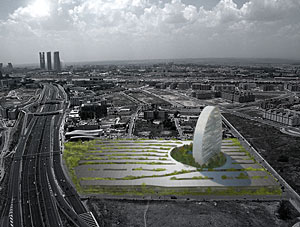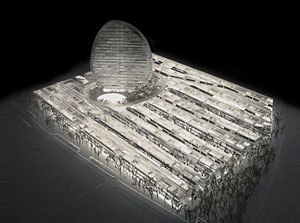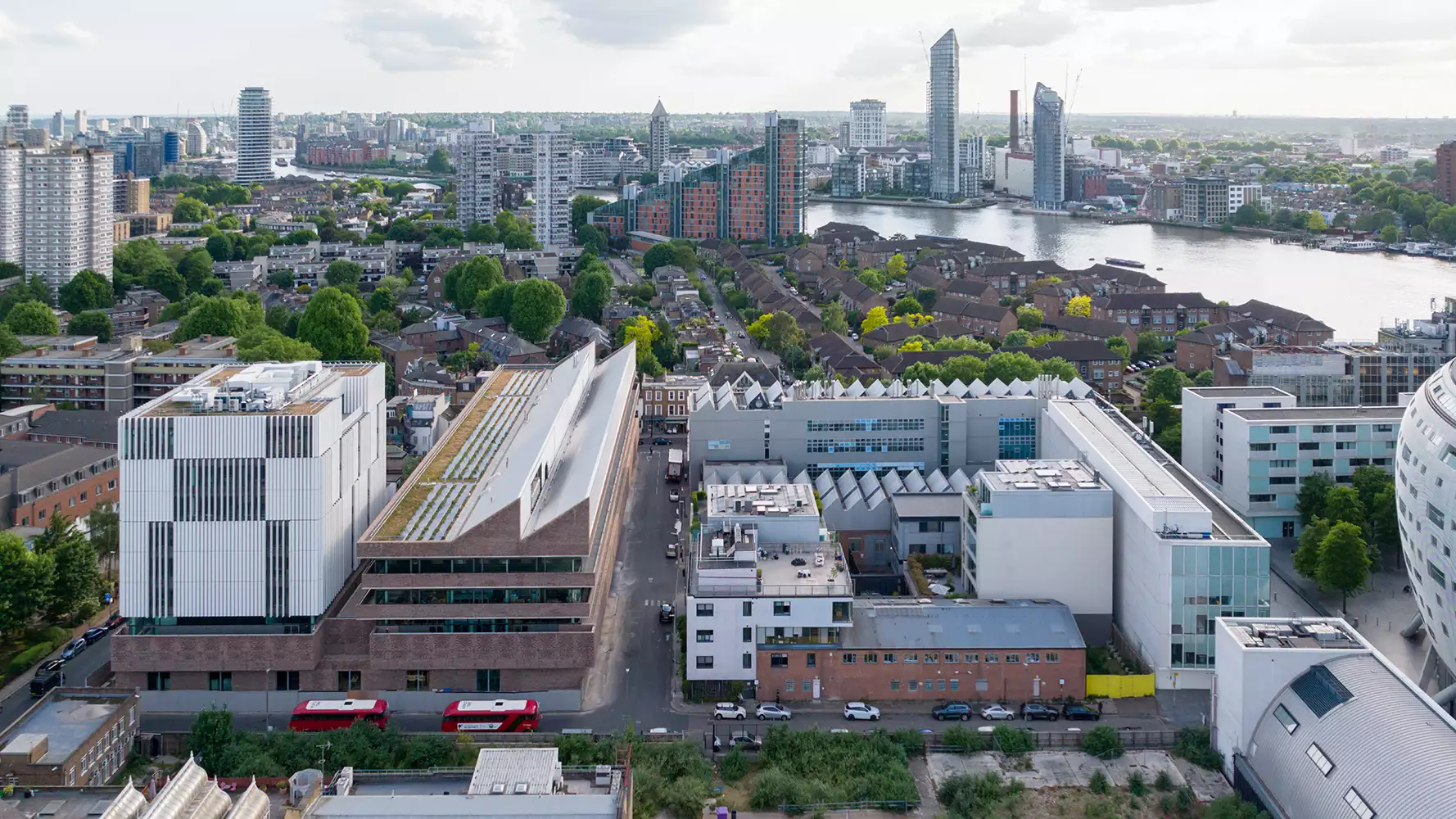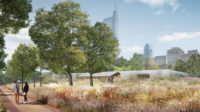A wheel-shaped tower rises out of a “carpet” of low-rise offices and gardens in Herzog and de Meuron’s design for the new Madrid headquarters of BBVA, Spain’s second largest bank. With over 800,000 square feet of office space for 6,500 employees, construction of the building will begin this year on a 22-acre site in the city’s northern suburbs. The project is scheduled for completion in 2013.


In their project brief, the architects describe the complex as an inward-looking “oasis.” A linear structure composed of three-story buildings, alleyways and irrigated gardens is laid over the entire site, following the topography. In the center of this structure, they have cut out a disc-shaped section of the low-slung building and stood it on end to create a 23-story tower that gives the project a presence on Madrid’s skyline. The tower rises from the circular plaza of its original footprint, where the main entry and communal facilities are located.
The architects defend the maze-like plan as a way to “encourage communication” among workers. “People walk instead of taking elevators; they meet and talk to one another.” The transparency of the glazed office areas “generates a sense of community,” while “the relatively small units permit employees to identify with their particular group.” The strategy also allowed the architects to absorb four preexisting, yet partially completed office buildings into the design.
BBVA will seek LEED certification for the project, which incorporates natural ventilation, shading overhangs, photovoltaic cells, and water recycling. The green corridors will be covered with retractable skylights in winter to create a greenhouse-like environment. BBVA estimates that these measures will reduce energy consumption by 30 percent. The character of the gardens will vary throughout the complex: Plans call for a stand of plane trees, a stone garden featuring Japanese scholar trees, avenues of poplars and cypresses, and oaks in the main plaza.
Herzog and de Meuron were chosen for the project in a limited competition last June, in which second and third prizes went to Zaha Hadid and Madrid architect Rafael de La-Hoz. BBVA only accepted the Swiss architects’ proposal this fall, after obtaining a city zoning variance for the proposed tower. The bank has financed the operation with the 2007 sale of four Madrid buildings, including its current landmark headquarters designed by Madrid architect Francisco J. Sáenz de Oíza in 1981.




Post a comment to this article
Report Abusive Comment